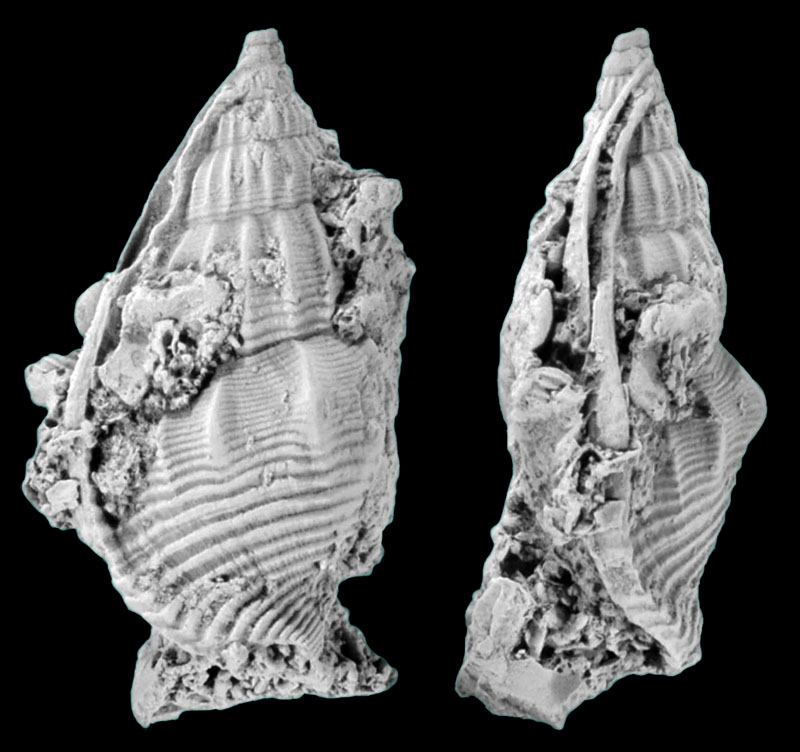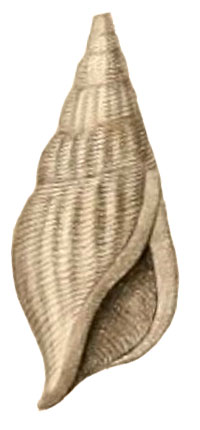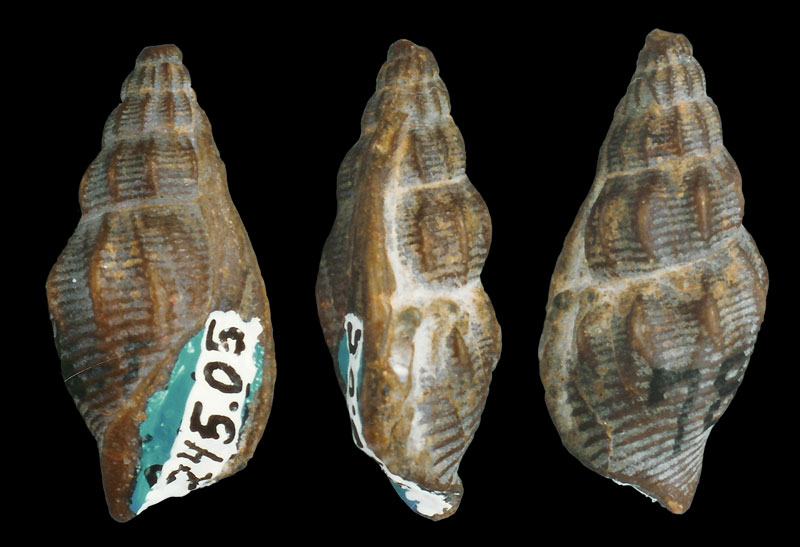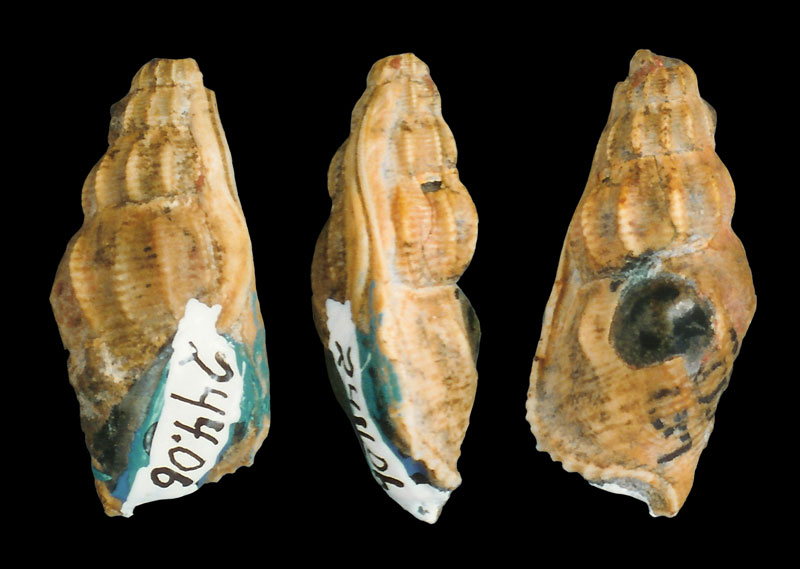Stromboidea
Original description of Rostellaria (Rimella) canalifera by Gabb, 1864, p. 123:
- "Shell small, unequally fusiform; spire elevated, longer than the mouth; whorls six or seven, convex; suture deep. Aperture long, rather narrow, oblique, acute behind, and broadly and obliquely emarginate in front; the posterior angle of the mouth is continued in a deep, narrow canal, slightly curved, along the spire to the apex; anterior canal broad, strongly curved upwards; outer lip thickened along its whole extent, but most strongly so above; inner lip incrusted by a callus, which extends posteriorly, so as to unite with the posterior canal. Surface marked by prominent longitudinal ribs, crossed by distinct revolving linear ribs, very uniform in size, and with interspaces of about the same size as the ribs."
Locus typicus: Martiñez and near Fort Téjon, Kern County, California, USA
Rostellaria (Rimella) canalifera Gabb, 1864, pl. XXIX, fig. 228
History and Synonymy
1868
Rimella canalifera in Gabb, 1868, Amer. Journ. Conch., vol. 4, p. 142
1869
Rimella canalifera in Gabb, 1869, Amer. Journ. Conch., p. 225
Specimens from institutional collections
Cowlitzia canalifera (Gabb, 1864); Tejon Group, late Eocene; “Tejon Quadrangle, along east bank of small gulch about ¼ mile east of pumping plant at mouth of Grapevine Cañon” (Clark & Palmer, 1923: 285), 29mm; LACM coll. no. 245.05; Ex-CAS no. 786; CAS locality 245; Photo Ron Voskuil.
Cowlitzia canalifera (Gabb, 1864); Tejon Group, late Eocene; “Tejon Quadrangle, along east bank of small gulch about ¼ mile east of pumping plant at mouth of Grapevine Cañon, elevation 2000 feet” (Clark & Palmer, 1923: 285); 22,7 mm; LACM coll. no. 244.06; Ex-CAS no. 785; CAS locality 244; Photo Ron Voskuil.
Remarks:
- The first Eocene fossils found on the West Coast of the United States were discovered in 1862, when William More Gabb, paleontologist for the Geological Survey of California, described mollusks from a boulder found in "Cańada de las Uvas" (now "Grapevine Canyon" along Interstate 5, between the San Emigdio and Tehachapi Ranges of southern California) Gabb (1864) thought these fossils were Cretaceous in age, and in 1869 he assigned them to beds he called the ''Téjon Group" (from Fort Téjon and the Téjon Pass, just south of the "Grapevine"). But in 1855, Timothy Conrad of the Academy of Natural Sciences of Philadelphia reassessed the "Téjon" fossils and assigned them to the Eocene. Eventually, the term "Téjon" became entrenched in the literature as a local term for Eocene in California.

Ectinochilus (Cowlitzia) aff. canalifera; Baja California Sur, Mexico; Bateque Formation, Eocene; Coll. UNAM IGM 5170, Photo & Copyright Universidad Nacional Autónoma de México, Colección Nacional de Paleontología
Reference:




